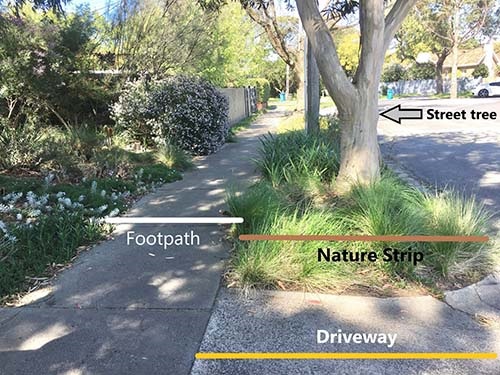What is a nature strip?
A nature strip is an area of public land between the property boundary and the kerb. It doesn’t include the footpath, kerb or driveway.
Nature strips play an important role in keeping our streets looking attractive while helping our environment by soaking up rain, and helping keep the air moist and cool. They can also improve local environment through indigenous plantings, providing habitat for local native wildlife and insects.

Nature strip role
Nature strips provide valuable green spaces in urban areas.
They often house essential services (such as communications, gas, water, sewerage, drainage and electricity) as well as an area for waste collection services.
Nature strips also allow easy access to the road or path, while providing vehicles and pedestrians with greater visibility, especially at corners or intersections.
Benefits of nature strips
Nature strips also provide various community and environmental benefits by:
- Absorbing rainwater, which improves the health of soil and reduces stormwater run-off into the street
- Helping to cool urban areas in the summer, as they do not reflect heat like pavements
- Providing shelter for people and wildlife, especially on hot days
- Providing green corridors for native wildlife, like birds and insects, which can be further encouraged by the use of indigenous plantings
- Improving the aesthetic quality of a street, which benefits property owners and businesses
Altogether, nature strips help to create a safer, more attractive and healthier environment for people to live and work in.